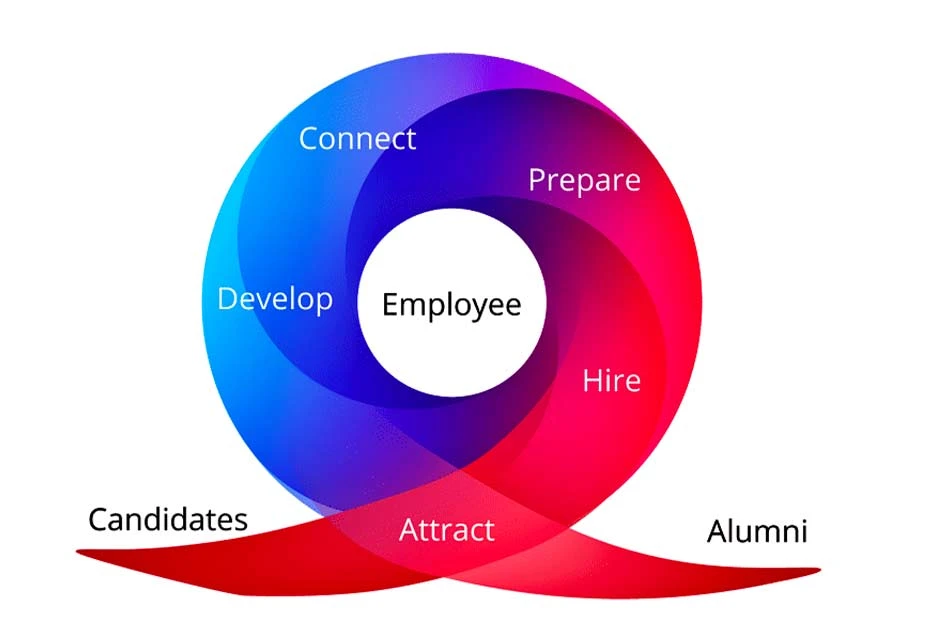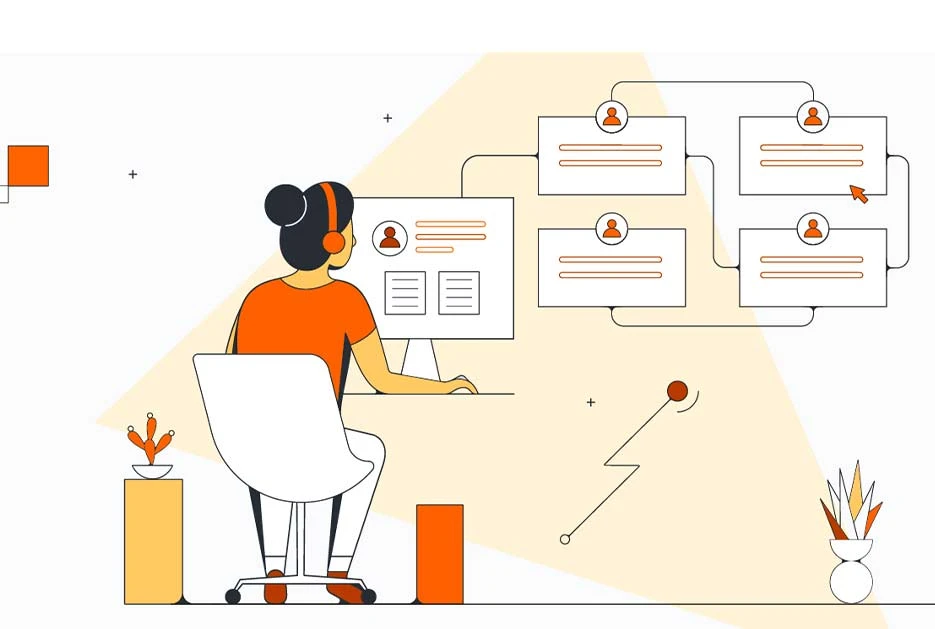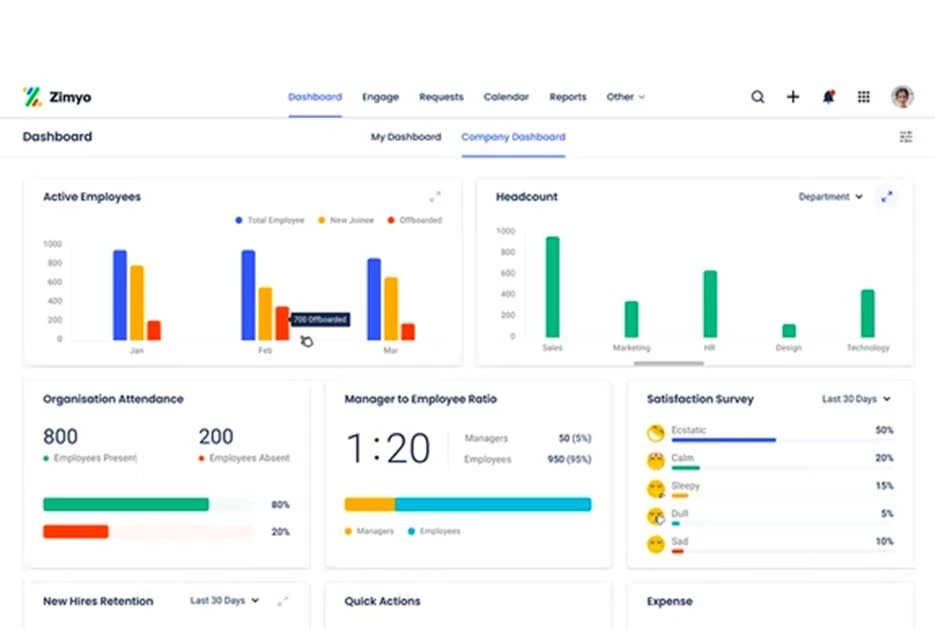Best Employee Lifecycle Management Strategies for Higher Productivity

Recruiting the best candidates can be a challenging for organizations. However, it is not impossible to find the best candidates. Engaging with employees during every stage of the employee life cycle and understanding where they are in the process can be extremely beneficial for your organization.
What Is Employee Lifecycle?
Employee lifecycle describes the stages that workers advance through within an organization. The employee lifecycle is important because it lets employees know where they stand in their career as well as helps employers plan their learning & growth.
Essentially, it describes how an employee grows within a company. There are phases in the employee life cycle such as attraction, recruitment, onboarding, development, performance management, and offboarding.
Why Is Employee Lifecycle Management Important?
From hiring to retirement, an employee’s life cycle describes the entire span of their employment with a company. It is important to divide the entire employee lifecycle into multiple segments for efficiently tracking and analyzing the progress of the employee in the organization.
All stages of the employee lifecycle are important and facilitate the next step. It helps in managing talent efficiently, provides a view of the employee journey, and creates opportunities to improve.
6 Stages of Employee Lifecycle Management Strategies

Here’re are some of the noteworthy stages of employee lifecycle, which are similar for employees across different industries.
- The Stage of Attraction
The first stage of the employee life cycle is attracting new talents as per the open job profiles.
Companies that do not recruit and retain outstanding people will fail over time, regardless of how good their product or service is. That is why it is crucial to attract the right employees for any company to succeed in the long run.
- Recruitment
The recruitment process should be as quick and simple as possible. For example, make it easier for people to apply directly through your website, without having to fill out lengthy forms.
You can hire the right talent by spreading the good word about your company through branding initiatives, positive reviews by your previous and existing employees on Glassdoor, and more.
- Onboarding
The first few weeks are when new hires become familiar with processes and systems as well as responsibilities of the job. HR professionals must conduct an induction program for the new hires.
To understand the corporate culture, new employees must undergo proper training. Employees should be aware of disciplinary procedures and policies along with the company culture. New employees should feel like they are part of the team from day one.
- Development
To retain top employees, career development program is quite effective. As part of the initial interviewing process, it is essential to discuss the candidate’s career aspirations to ensure that their goals are aligned with your organization’s goals. It’s important to conduct regular reviews of employees’ performances so that they can understand how they’re doing.
- Performance Management/Retention
Employee training and developmental efforts of an organization should go hand-in-hand with performance management. Performance appraisals and assessments enable employees to contribute effectively in the growth in the company. This not only promotes retention but also ensures the employee’s continued development.
When employees are evaluated and acknowledged, they are more likely to be happy and engaged at work. Monitoring is used to identify candidates for promotion while also finding any training gaps.
- Offboarding/ Separation
However, remember that an employee life cycle will eventually end. An employee may leave the company for many reasons, including better prospects, retirement, or any other personal reasons. Ensure that your departing employees are happy when they leave the company. An interview can help in understanding an employee’s experience with your company.
Suggested Read: Effective Employee Retention Strategies and Techniques
Advantages of Implementing an Employee Life Cycle Strategy

Map out the employee journey in the same way you map out the customer journey, and you will surely see two key benefits: improved company reputation and higher talent retention. Positive company reputation makes it easier to hire more talent.
On the other hand, it’s possible to reduce turnover concerns by efficiently allocating resources and efforts to reduce money and time wasted on employee turnover expenses.
- An effective Employee Life Cycle Strategy helps align the performance of your employees with that of your company.
- By recognizing staff on a regular basis and acknowledging their peers, organizations have a better level of employee engagement.
- Makes it possible to realize the goals of an employee while also addressing the demands of a business.
Best Strategies for Employee Lifecycle Management
To implement Employee Lifecycle Management strategies successfully, here are some strategies to consider at each stage.

- Attraction
- Increase brand awareness – Regularly attend conferences and seminars and contribute to industry magazines, blogs, and websites on a regular basis. Consequently, your workplace will be seen as a great place to work.
- Establish a great culture – Employees are the most important and persuasive representatives of any company. Having an exceptional company culture increases the likelihood that existing employees will tell others what an amazing place your company is to work with.
- Compensate your employees with attractive benefits – A competitive compensation package is one of the most obvious strategies a business can use to attract top talent to the organization.
- Recruitment
You can ask your current team for referrals – A referral from a current employee might be one of the best recruitment strategies you can employ. However, it is important not to hire close family or friends of the employees.
- Explore different recruitment platforms – Focusing on just one recruitment platform limits your pool of potential candidates. Find out where your ideal candidates tend to search for opportunities.
- Clearly define who and what you are seeking – Although being broad is useful in reaching a wider audience, it is still important to provide all of the prerequisites to make the application and assessment process easier for you and the candidate.
- Onboarding
- Job description – On a single page, list the most important duties of the position, as well as any experience and skills which are relevant to the role. It does not have to be a long, academic job analysis.
- Explain the values and vision of the company – It is important to introduce the values and vision of the company to your new hire and to explain what they mean to you.
- Clearly describe your expectations – Although some details will be there in the job description, still it is crucial to familiarize each new hire with your expectations while also explaining their importance for your company’s success.
- Regular follow-ups – After a few weeks, invite new employees to a face-to-face meeting to find out how they are doing, what challenges they encountered, and so on.
Suggested Read: List of Best HR Software In India for Automating HR Task Management
- Development
- Support external learning – You can help your team members achieve great success through skill development by offering them the opportunity to attend relevant seminars and conferences.
- Identify key skills and expertise – A manager should work directly with an employee to identify their key skills and expertise. Based on their performance insights, you can determine areas for improvement and prioritize them.
- Promote self-development among your team members – Make sure your employees are focused by encouraging them to create an action plan that is focused on their professional goals.
- Rewards employees for learning on their own time – You will likely find many members of your team participating in informal learning outside of normal working hours. Be sure to learn more about it, and express your appreciation for their efforts.
- Retention
- Select the right people – A company needs to hire and attract top talent first in order to retain them. You stand a better chance of retaining the right employees if you were careful and methodical in your hiring process.
- Foster strong relationships with team members – To keep your best employees, it is critical to build and foster an open, respectful, and honest relationship.
- Communicate your team aspirations and organizational mission – Your communication with them should focus on where they fit into the organization, and how their contributions and achievements help the organization to meet its goals.
- Measure team morale and employee feedback frequently – Smaller companies may benefit from regularly meeting the team face-to-face and discussing the progress and identifying their problems or issues. Use short employee surveys and online feedback mechanisms if you want to regularly evaluate team morale and solicit constant feedback.
- Understand your employees’ motivations – Since no two employees are the same, there cannot be a single factor that motivates every employee to perform well. Engaging your employees and retaining them requires knowing what drives and motivates them.
- Separation
- Understanding the reason for resignation – Often, the reason for resignation stated by an employee differs from the actual reason. Try to dig deep to find out what caused the separation to avoid the same situation in the future.
- Stay positive – There is a sense of loss when a top employee leaves your team, but it doesn’t mean that you cannot replace them with another outstanding employee.
- Seek honest feedback – Consider conducting an exit interview with the leaving employee to learn exactly how things are at your organization.
Suggested Read: 9 Best Employee Referral Program Examples for Quick Hiring
The Role of Zimyo HRMS in Employee Lifecycle Management

Zimyo employee management software is known to be one of the best employee experience platform that empowers employees with a self-service portal. Zimyo HR software plays an important role in ensuring a seamless employee lifecycle management strategies in your organization.
Zimyo enables a smooth, hassle-free onboarding experience for employees. It allows new hires to do most of the documentation and paperwork digitally. Also, HR employees can introduce new joiners to other teams with automated emails.
During employees’ tenure in the organization, Zimyo Engage boosts employee engagement by celebrating and recognizing employees’ efforts. To increase employee retention in your organization, Zimyo helps manage employee benefits such as health insurance, corporate cards, pension schemes, personal, and medical emergency loans.
Employees can digitally access their performance graph and pay slips, apply for leaves, and regularize attendance. Even when the organization and employees decide to part ways, the off-boarding process can be easily completed with Zimyo. You can use this HR software for dues clearance, asset management, and knowledge transfer.
Conclusion
Employee Lifecycle Management strategies are highly effective method of understanding and preparing for each stage of employee interaction with your organization, making the process successful throughout. Trying your best at each step is all that you would need to do if you want to attract and retain a quality team.
FAQs
How to manage an employee lifecycle?
Both organization and HR managers need the right tools for successful employee life cycle process management. Zimyo HRMS is among such excellent tools that can be used to manage and improve processes at every stage of the employee lifecycle.
What are the six stages of an employee lifecycle?
The employee lifecycle consists of six major stages that are observed during an employee's tenure with an organization: the stage of attraction, recruitment, onboarding, development, performance management, and separation or offboarding.
How critical is employee lifecycle management?
Keeping track of employee lifecycle while also smoothly managing and maintaining it is critical as it requires a consistent set of procedures to follow throughout the employee journey in an organization while the employers need to evaluate the data on a regular basis.
Related Categories: Employee Management Software | Employee Monitoring Software | Employee Recognition Software | Employee Desktop Monitoring Software
A digital marketer by profession and a writer by passion, Vineet takes great interest in staying on top of business technologies. You ask him, and he knows it! Not a single news in the SaaS world has ever skipped his attention. He believes in SaaSifying his readers with... Read more


























